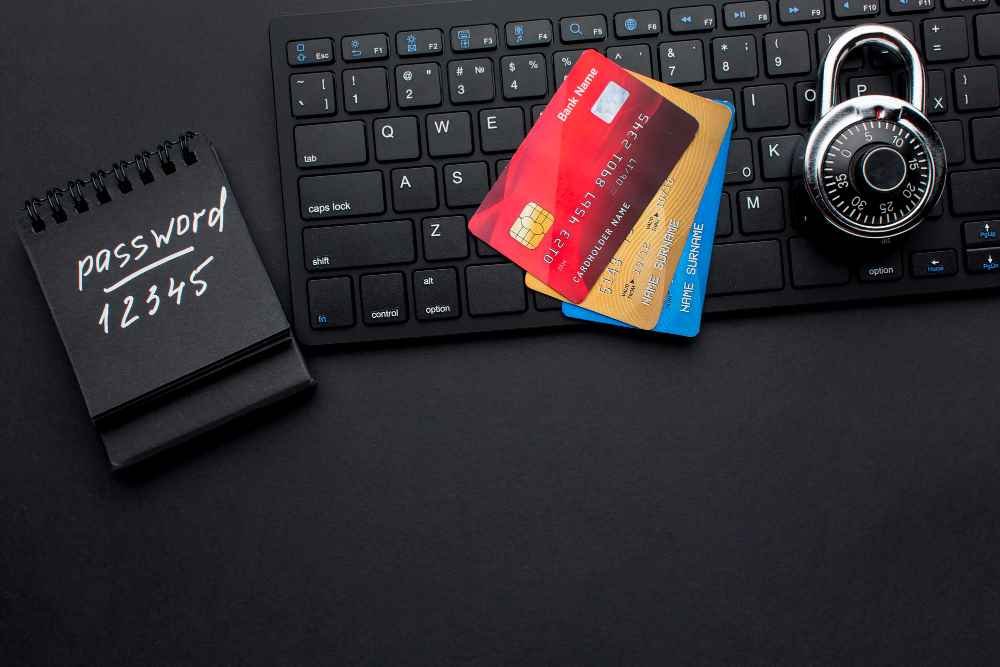Web Security Best Practices: Essential Measures to Combat Vulnerabilities and Threats
In today’s world, where so much happens online, keeping your business’s website secure is crucial. Cybercriminals often target small businesses because they might not have strong security in place. Surprisingly, 43% of all cyberattacks are aimed at small businesses. This is why it’s vital to learn about and use good web security practices to protect your business.
Immediate Threats: The Dark Side of the Internet

Small businesses are frequently targeted by cybercriminals because they often have weaker security. The average cost of a cyberattack on a small business is $200,000. This large expense can be enough to cause a small business to go bankrupt. It’s essential to understand these risks and take steps to protect your business.
Common Vulnerabilities: Know Your Enemy

- Weak Passwords One major risk is using weak passwords. Surprisingly, many people still use passwords like “123456.” These are very easy for hackers to guess. Always make sure your passwords are strong and unique.
- Outdated Software Another big risk is using old software. Many small businesses forget to update their software regularly. This can leave gaps that cybercriminals can easily exploit. Always keep your software up to date to close these gaps.
- Unsecured Networks Having an unsecured Wi-Fi network is also dangerous. Hackers can easily access these networks. Make sure to use strong encryption methods and secure your network to protect your business.
Proactive Measures: Fortifying Your Digital Fort

- Regular Software Updates Always keep your software updated. This means your website system (CMS), plugins, and any other tools you use. Regular updates fix security issues and prevent hackers from exploiting weaknesses.
- Strong Password Policies Use strong passwords. A strong password includes a mix of letters, numbers, and symbols. Encourage using password managers, which can create and store strong passwords for you, making it easier to maintain security.
- Secure Your Network Make sure your Wi-Fi network is secure. Use WPA3 encryption, which is the latest and strongest security method. Change the default passwords on your network devices, and hide your network’s name (SSID) so unauthorized people can’t easily find and access it.
Shock Value: The Real Cost of Ignoring Security

Ignoring web security can have devastating consequences for your business. If a cyberattack happens, it can cost you a lot of money. But the damage doesn’t stop there. A single data breach can also ruin the trust your customers have in your business. Once that trust is lost, it can be very hard to get it back. This can lead to a loss of customers and harm your business’s reputation for a long time.
Case Studies: Real-Life Consequences
Target In 2013, the retail giant Target faced a massive data breach. Hackers got access to 40 million credit and debit card accounts. This breach cost Target $162 million and severely damaged its reputation. Customers lost trust in the company, and it took a lot of time and effort to rebuild that trust.
Equifax In 2017, Equifax, a company that collects consumer credit information, experienced a data breach affecting 147 million people. The breach happened because they didn’t update their software. This failure to patch a known vulnerability resulted in a $700 million settlement. This incident shows how costly ignoring security updates can be.
Best Practices: Essential Security Measures

- Implement SSL Certificates SSL certificates are essential for your website. They encrypt the data exchanged between users and your website, protecting sensitive information like credit card numbers and personal details from being intercepted by hackers.
- Use Web Application Firewalls (WAF) A Web Application Firewall (WAF) is like a security guard for your website. It filters and monitors the traffic coming to your site, blocking any malicious activity. This helps protect your site from cyberattacks.
- Regular Backups Regularly back up your website’s data. If a cyberattack happens, having a backup allows you to quickly restore your site without losing important information. This minimizes downtime and damage.
- Educate Your Team Make sure your team knows about web security best practices. Regular training can help them recognize phishing emails and other common cyber threats, preventing potential security breaches.
Understand This: The Path to Security
Web security is essential, not optional, for small businesses. Implementing the best security practices is crucial to protect your business from harmful cyberattacks. Remember, it’s cheaper to prevent problems than to fix them after they happen. Stay alert, keep your software updated, and protect your digital information.
By following these security measures, you safeguard your business and build trust with your customers. Don’t risk becoming a victim of cybercrime. Strengthen your security defenses today.
